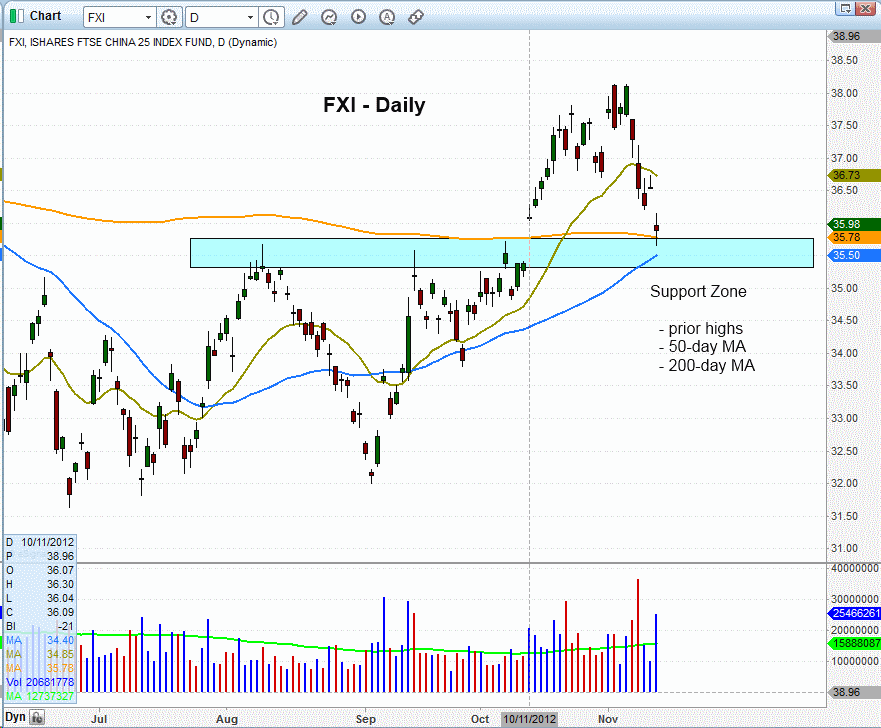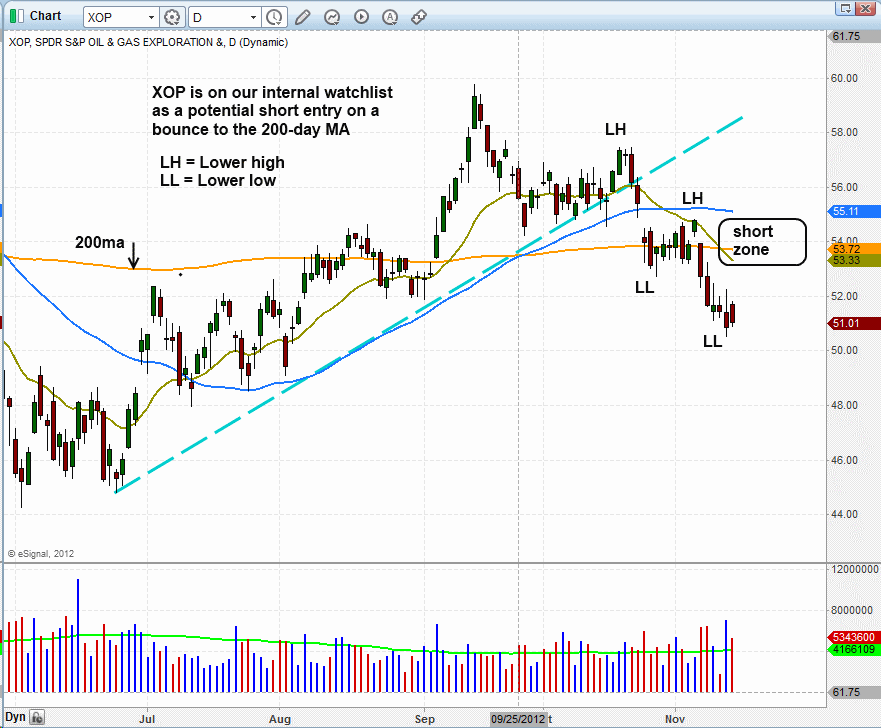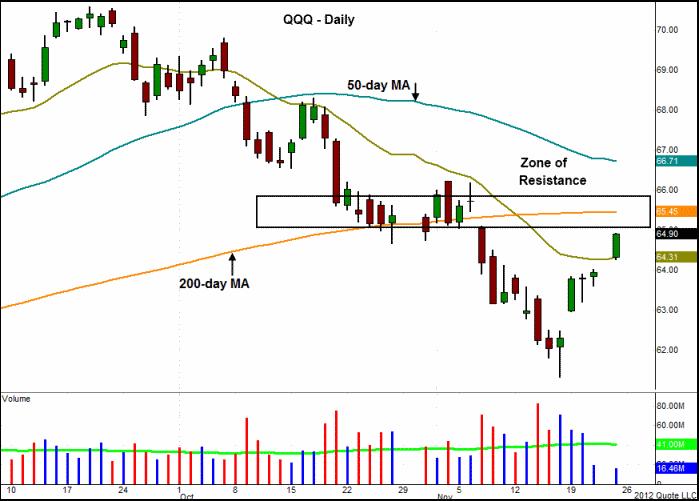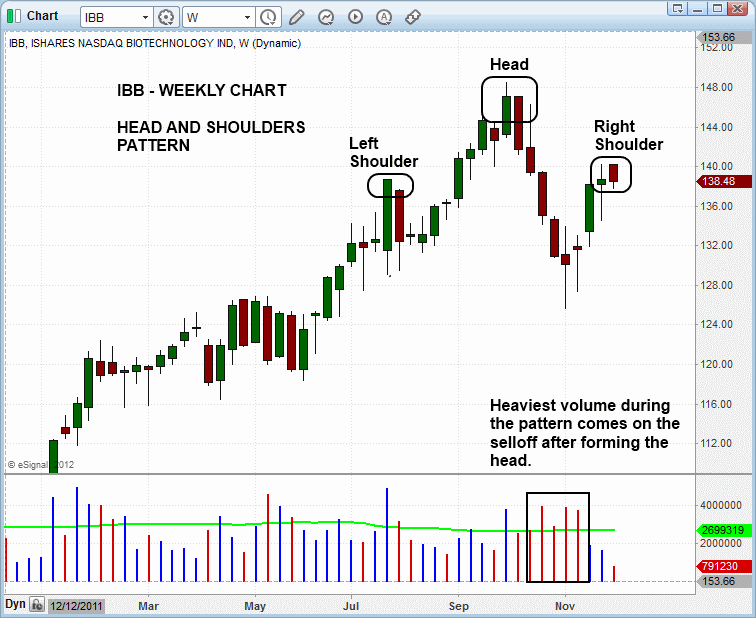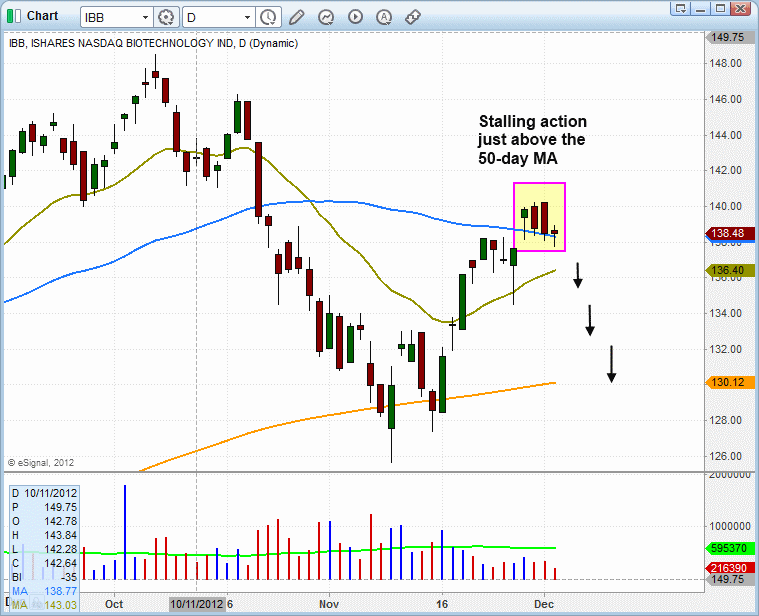morpheustrading
Active member
- Messages
- 166
- Likes
- 3
Two New ETF Swing Trade Setups You Can’t Afford To Miss ($SKF, $UNG)
Going into today, we are targeting two more ETFs for potential swing trade entry. The first is ProShares UltraShort Financials ($SKF), which is another trend reversal play of a “short ETF.” After forming a month-long base near its multi-year lows, the ETF recently formed a “higher low,” then broke out above intermediate-term resistance of its 50-day moving average on higher than average volume.
As you may recall from yesterday’s ETF analysis, in which we pointed out the breakdown in Select Sector Financial SPDR ($XLF), bearish momentum has started picking up in the financial sector. As such, we are looking to take advantage of this newfound weakness through buying SKF. However, because the ETF has rallied so much over the past two days, we are only interested in buying SKF if it pulls back slightly from its current level (buy limit order). Otherwise, our reward to risk ratio on the trade would be lower than we prefer.
The trade setup and potential entry point is shown on the chart below (regular subscribers should note our exact entry, stop, and target prices on the ETF Trading Watchlist section of today’s newsletter):

The second ETF on our watchlist for potential buy entry today is US Natural Gas Fund ETF ($UNG), a commodity ETF that tracks the price of the natural gas futures contracts.
UNG is now setting up for an ideal re-entry point that is lower risk than last month’s initial buy entry because the ETF has come into intermediate-term support of its 50-day moving average. In addition to trading in a tight, sideways range for the past four days, UNG also formed a bullish engulfing candlestick pattern yesterday, which enables us to have a more clearly defined stop price.
The combination of technical factors above indicates selling pressure has subsided, and the ETF is now positioned to resume its uptrend from the April 2012 lows. The setup for this ETF pullback trade is shown below:

Thanks to our market timing system remaining in “sell” mode (since October 12), we continue to be positioned primarily on the short side of the market (including being long “short ETFs”). Over the past two days, with the main stock market indexes falling sharply, those bearish positions have started working out nicely.
We bought ProShares UltraShort Basic Materials ETF ($SMN) on Nov. 7 and ProShares UltraShort Real Estate ETF ($SRS) on Nov. 5, two inversely correlated ETFs that move in the opposite direction of their underlying indexes. Both were entered as bullish trend reversal plays. Yesterday, SMN gained 2.8% and SRS rallied 1.9%, as both ETFs broke out above key horizontal price resistance levels. This is annotated on the daily charts of these “short ETFs” below:


In addition to SMN and SRS, our position in Direxion 20-Year Treasury Bull 3x ($TMF) also had a great day. Government treasury bonds rallied sharply, enabling our position in TMF to rocket 4.5% higher yesterday. Although it is not a short position or inverse ETF, our ETF trading strategy enabled us to recently buy TMF because it is a fixed-income ETF that is not necessarily correlated to the direction of the stock market. The same is generally true of currency and commodity ETFs, both of which enable investors and traders to have a low correlation to the direction of the stock market, without the need to sell short or buy a “short ETF.”
As you can see on the chart below, TMF has now confirmed its intermediate-term trend reversal, and has convincingly broken out above horizontal price resistance as well:

When will the near and intermediate-term selling pressure in the broad market finally subside? We have no idea, nor does anybody else. But the beauty of following a rule-based trading system is that it really doesn’t matter because we can profit from trends in either direction. Moreover, remember that we are NOT in the business of predicting what the market will do next. Rather, our strategy is simply designed to dynamically react to whatever type of price action the broad market throws at us at any given time.
Developing a mindset to not care about market direction or duration of trends is not easy at first, but once you condition yourself to be indifferent about the market’s direction, or how long a trend will persist, it will definitely ease any level of mental stress or anxiety. In turn, this will enable you to think more clearly and maximize your short-term trading profits.
Going into today, we are targeting two more ETFs for potential swing trade entry. The first is ProShares UltraShort Financials ($SKF), which is another trend reversal play of a “short ETF.” After forming a month-long base near its multi-year lows, the ETF recently formed a “higher low,” then broke out above intermediate-term resistance of its 50-day moving average on higher than average volume.
As you may recall from yesterday’s ETF analysis, in which we pointed out the breakdown in Select Sector Financial SPDR ($XLF), bearish momentum has started picking up in the financial sector. As such, we are looking to take advantage of this newfound weakness through buying SKF. However, because the ETF has rallied so much over the past two days, we are only interested in buying SKF if it pulls back slightly from its current level (buy limit order). Otherwise, our reward to risk ratio on the trade would be lower than we prefer.
The trade setup and potential entry point is shown on the chart below (regular subscribers should note our exact entry, stop, and target prices on the ETF Trading Watchlist section of today’s newsletter):
The second ETF on our watchlist for potential buy entry today is US Natural Gas Fund ETF ($UNG), a commodity ETF that tracks the price of the natural gas futures contracts.
UNG is now setting up for an ideal re-entry point that is lower risk than last month’s initial buy entry because the ETF has come into intermediate-term support of its 50-day moving average. In addition to trading in a tight, sideways range for the past four days, UNG also formed a bullish engulfing candlestick pattern yesterday, which enables us to have a more clearly defined stop price.
The combination of technical factors above indicates selling pressure has subsided, and the ETF is now positioned to resume its uptrend from the April 2012 lows. The setup for this ETF pullback trade is shown below:
Thanks to our market timing system remaining in “sell” mode (since October 12), we continue to be positioned primarily on the short side of the market (including being long “short ETFs”). Over the past two days, with the main stock market indexes falling sharply, those bearish positions have started working out nicely.
We bought ProShares UltraShort Basic Materials ETF ($SMN) on Nov. 7 and ProShares UltraShort Real Estate ETF ($SRS) on Nov. 5, two inversely correlated ETFs that move in the opposite direction of their underlying indexes. Both were entered as bullish trend reversal plays. Yesterday, SMN gained 2.8% and SRS rallied 1.9%, as both ETFs broke out above key horizontal price resistance levels. This is annotated on the daily charts of these “short ETFs” below:
In addition to SMN and SRS, our position in Direxion 20-Year Treasury Bull 3x ($TMF) also had a great day. Government treasury bonds rallied sharply, enabling our position in TMF to rocket 4.5% higher yesterday. Although it is not a short position or inverse ETF, our ETF trading strategy enabled us to recently buy TMF because it is a fixed-income ETF that is not necessarily correlated to the direction of the stock market. The same is generally true of currency and commodity ETFs, both of which enable investors and traders to have a low correlation to the direction of the stock market, without the need to sell short or buy a “short ETF.”
As you can see on the chart below, TMF has now confirmed its intermediate-term trend reversal, and has convincingly broken out above horizontal price resistance as well:
When will the near and intermediate-term selling pressure in the broad market finally subside? We have no idea, nor does anybody else. But the beauty of following a rule-based trading system is that it really doesn’t matter because we can profit from trends in either direction. Moreover, remember that we are NOT in the business of predicting what the market will do next. Rather, our strategy is simply designed to dynamically react to whatever type of price action the broad market throws at us at any given time.
Developing a mindset to not care about market direction or duration of trends is not easy at first, but once you condition yourself to be indifferent about the market’s direction, or how long a trend will persist, it will definitely ease any level of mental stress or anxiety. In turn, this will enable you to think more clearly and maximize your short-term trading profits.

